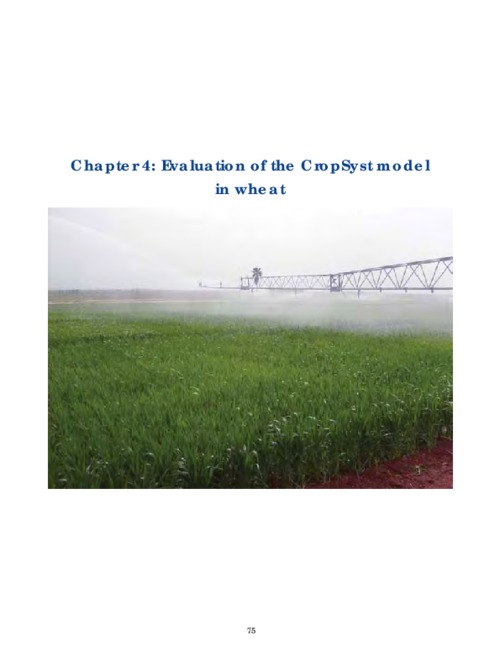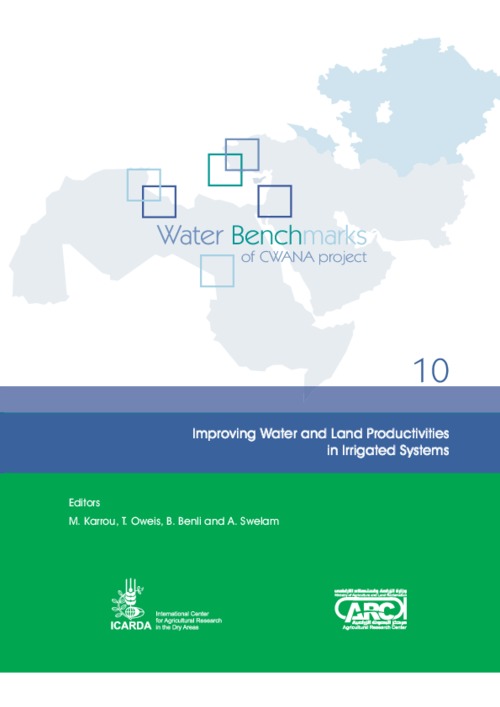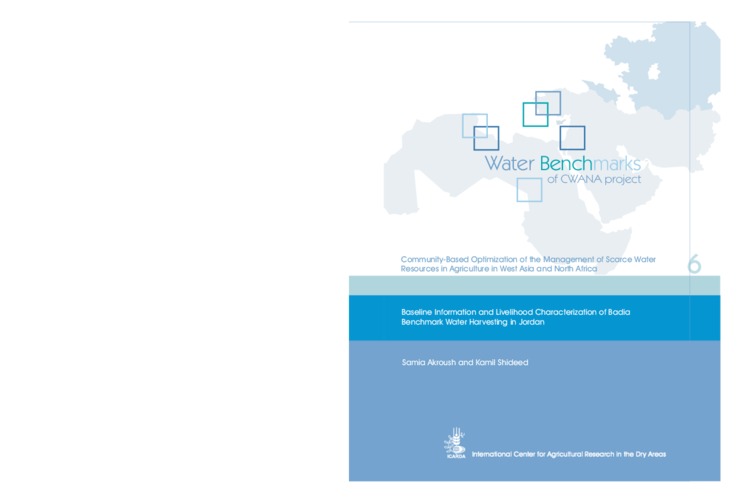Evaluation of the CropSyst model in wheat
CropSyst is the crop growth model chosen as a decision tool for the Tadla Benchmark project. CropSyst is a daily time step simulation model. The model was developed to serve as an analytic tool to study the effect of cropping systems management on productivity and the environment. The model simulates the soil water budget, soil– plant nitrogen budget, crop canopy and root growth, dry matter production, yield, residue production, and decomposition. Management options include cultivar selection, crop rotation, irrigation, nitrogen fertilization, tillage operations, and residue management.








